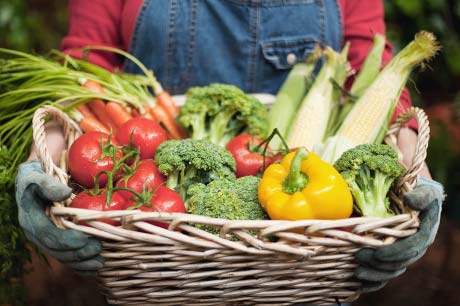Grow your own medicine
By Paula Franken
Spring’s finally here and many of us are thinking about planting gardens — either in our own backyards or in community spaces. Growing your own food, free of chemicals and pesticides, is a great way to make sure you and your family are eating a healthy diet. Especially when you consider the fact that a diet full of fruits and vegetables is a proven way to lessen your risk of heart disease, Type 2 diabetes and high blood pressure.
What grows in Pennsylvania?
Luckily for us, our state is known for rich soil, abundant farmland and plentiful farmers’ markets. But if you want to grow your own, here are a few garden goodies that are easy to grow and packed with nutrition.

Tomatoes:
An excellent source of vitamin C and other antioxidants, tomatoes help fight free radicals that are known to cause cancer. They also support heart health, protect muscles, reduce kidney stones, help fight diabetes and are great for your eyes and skin.
Kale:
This leafy member of the cabbage family is one of the most nutrient-dense foods on the planet. Kale is loaded with antioxidants and contains a wide range of vitamins. When steamed, it’s especially good for lowering cholesterol levels, but it is also effective when juiced or eaten raw.
Bell peppers:
Whether you choose red, yellow, orange or green (which are unripe), peppers are an excellent source of vitamins and minerals. A single serving can provide 169% of your recommended daily intake (RDI) of vitamin C.
Basil:
Don’t forget to add herbs to your garden plan. Basil is good for digestion and has strong anti-inflammatory properties. These guard against a variety of diseases and disorders including heart disease, rheumatoid arthritis and inflammatory bowel conditions.
Mint:
Peppermint and spearmint are known for dynamic flavor and can help relieve indigestion, improve irritable bowel syndrome and enhance brain function. Though it’s usually eaten in small amounts, some salad recipes call for more mint — and make the most of its nutritional benefits.
Believe it or not, summer is right around the corner. Get planting — and get ready to enjoy nature’s bounty!
Next steps:
Looking for healthy recipes? Find inspiration here!

